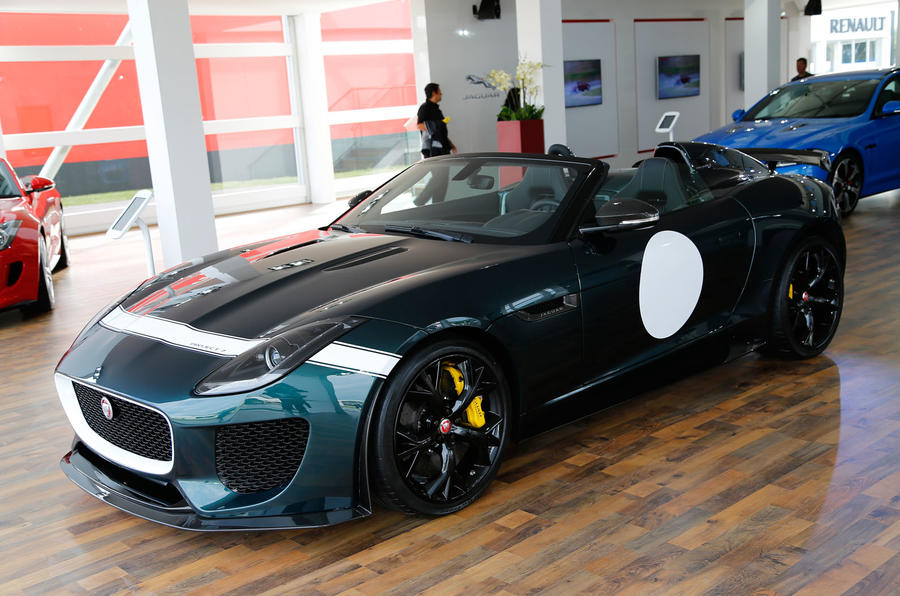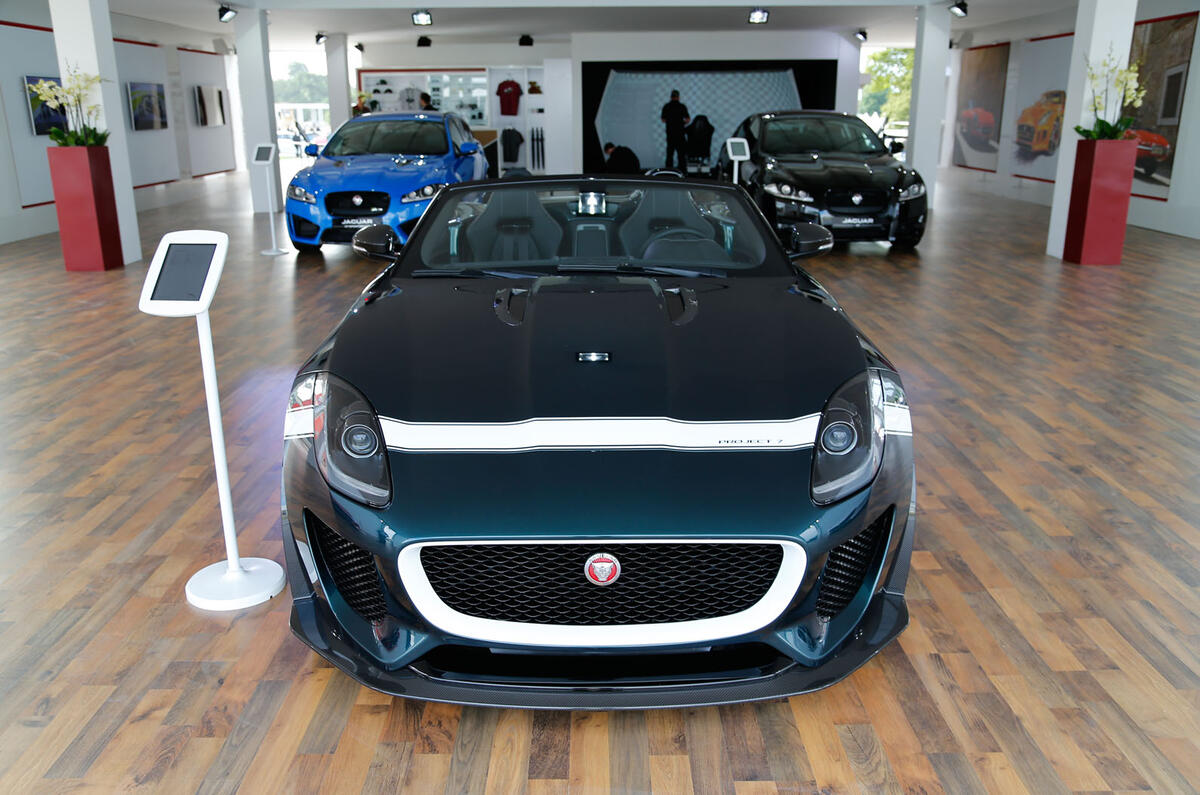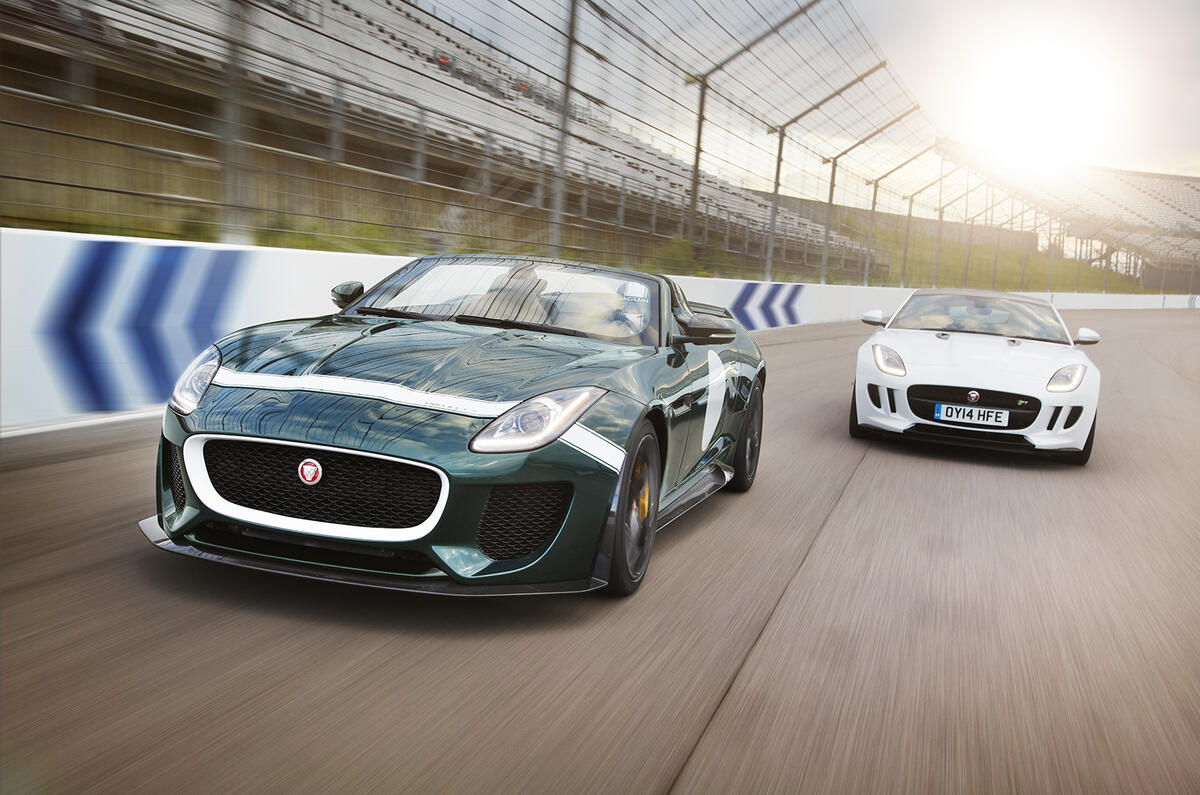The spectacular Jaguar F-type Project 7 super-roadster – toast of last year’s Goodwood Festival of Speed – is being put into limited production.
Jaguar is using the car as the centrepiece for the launch of its new Special Operations (SO) division whose job will be to produce a suite of cars and services specifically designed for the Jaguar faithful.
The division, eventually intended as a kind of cross between Bentley’s Mulliner and Mercedes’ AMG, is headed by former Land Rover brand boss John Edwards, who has spent the past nine months defining its structure, staffing and activities.
The production-ready Project 7 flagship adapts the Jaguar F-Type’s contemporary styling and hardware to create a car that recalls the all-conquering Le Mans-winning D-type, whose 60th anniversary the firm is celebrating this year. The ‘7’ signifies Jaguar’s pride at having won Le Mans seven times since the early 1950s, although bosses say that there is no plan for an imminent racing return.
Up to 250 examples will be built, and regular Jaguar dealers will sell them at £135,000 each. With an electronically governed top speed of 186mph and a 0-60mph sprint time of just 3.8sec, this will be one of the quickest production Jaguars ever.
This latest, production-spec Project 7 looks very similar to last year’s concept but differs in almost every detail and surface because of its need to comply with production car legislation and to maintain aerodynamic stability up to its governed 186mph top speed.
Production models will be hand-built during 2015 by the new JLR sub-division called Special Vehicle Operations (SVO) and headed by Paul Newsome, the ex-Lotus, ex-Williams engineer who was chief of the recent C-X75 hybrid supercar project.
The Project 7 idea was born about 18 months ago, from the pen of a young JLR designer, Cesar Pieri, in the group’s Whitley design studio. The sketches caught the eye of design boss Ian Callum, who gave them the go-ahead because he already knew that the company was looking for a car to wow the crowds at Goodwood 2013 – which the original Project 7 subsequently did in the hands of Jaguar engineer and master wheelman Mike Cross.
The enthusiastic reaction to the car, not least from potential buyers, convinced Edwards and Co that Project 7 would make an ideal flagship for its new division.
Essentially, the car is an F-type roadster relieved of its heavy hood mechanism and fitted with lightweight seats that carve a cool 80kg off the kerb weight and leave it at a respectable 1585kg.
Compared with the regular roadster, Project 7 has a new front bumper and splitter, a cut-down windscreen, a prominent fairing (incorporating a rollover bar) behind the driver’s head, new side skirts and diffuser and a deck-mounted wing.























































Join the debate
Add your comment
F-Type dead in showrooms
Shortbread, Roadster and Grunt
As an avid reader of Auto Journals ( Motor, Autocar, Fast Lane, Performance Car, Car, Auto Express, Evo and What Car) for 36 years it's nice to chew the fat with individuals who have equal passion for the automotive industry.
It's a shame that some individuals only pop up on here to cause controversy.
The majority though have interesting points of view and I like a healthy debate so let's see more of this please.
Soldi